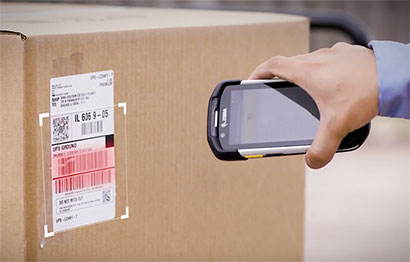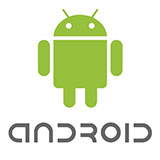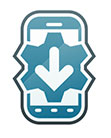|
Zebra TC72/TC77 Touch Computer
Evolving Android-based ultra-rugged enterprise handheld gets comprehensive update
(by Conrad H. Blickenstorfer)
Share on:




On September 27, 2018, Zebra Technologies introduced substantial hardware and software upgrades to its most rugged line of mobile touch computers. The new TC72 and its mobile broadband-equipped TC77 sibling are devices that provide the familiarity and simplicity of a modern Android smartphone in a package durable enough to withstand years of use and abuse in even the toughest working environments. Over the past five years Zebra shipped over a million of their various touch computers, a number that will quickly grow as more and more enterprises deploy handhelds in jobs where consumer smartphones simply can't hold up.

How did Zebra upgrade the new TC72/TC77 compared to the original TC70 and TC70x/TC75X? They look virtually identical to their predecessors that go back to late 2014. The changes are in the technology, both hardware and software. And how does the TC72/TC75 compare to the also new TC52/TC57 that Zebra introduced at the same time? Screen size is the same and technology is largely the same, but the TC72/TC75 add another degree or two of toughness and ruggedness compared to the already well-protected TC52/TC57, plus some additional capabilities.
What all this means is that the TC72/TC77 still looks like a substantially beefed-up version of a smartphone. It's fairly handy, with a footprint just a bit larger than that of an iPhone 8 Plus. There's capacitive multi-touch that can handle fingers, a stylus, gloves and rain. The display still measures 4.7 inches diagonally — like the iPhone 8 — and it still offers 1280 x 720 pixel resolution.

Compared to the predecessor TC70x/TC75x, there is now a more powerful 2.2GHz Snapdragon 660 octa-core processor that should be both faster in every respect and, thanks to 14 vs 28 nm process technology, more power-efficient to boot. There's a new graphic processor, and LTE data performance should be way up (TC77 model only). The 13 megapixel camera should be quicker, too, in focussing and shutter lag. It can record 4k video, has image stabilization, and can be used for scanning (as an alternate to the integrated scanner). The front cam is now up to 5mp and supports VLC (Visible Light Communication), which is immune to, and does not cause, RF interference, is very secure, and can be used for emerging network applications.
It's Android-only now
Whereas the TC70x/TC75x was available both with Android and with Microsoft Windows 10 IoT Mobile Enterprise (necessitating two different hardware versions), the new TC72/TC77 is Android only.  That brings up some issues as customers no longer have the safety blanket of being able to seamlessly plug into their existing Microsoft infrastructure.
That brings up some issues as customers no longer have the safety blanket of being able to seamlessly plug into their existing Microsoft infrastructure.
As a relatively new operating platform that was initially designed exclusively for consumer phones, Android is not a natural to meet enterprise requirements. There was (and is) version fragmentation, Google's haphazard upgrade support, marginal security, and for software downloads reliance on the "Google Play" store, which is nowhere near as structured and supervised as Apple's app store.
That meant that providers of enterprise-oriented Android solutions were on their own to come up with features, utilities and functionality more suitable for their customers. Zebra initially addressed that by creating a layer of "Android Mx" extensions to add enterprise-class security, manageability, data capture and wireless connectivity. That appears to now have morphed into Zebra's "Mobility DNA" (see Mobility DNA brochure here). To be honest, it's quite a monumental task to patch Google's ever-changing phone OS into something enterprises feel comfortable with, but Zebra's certainly putting forth an increasingly complete effort.
Google itself is quite aware of the issue. A while ago, the company launched Android for Work, which was designed to provide enterprise features for Android users. More recently, Google created the Android Enterprise Recommended (AER) program that independently validates enterprise-class solutions (Zebra participates in that).
Another inherent issue is that Android is a consumer platform with easy, unlimited access to entertainment and apps. That is not necessarily a good thing in business where devices are used for work and the last thing they should do is invite and facilitate distraction.
One way to address this issue is using Google's AOSP (Android Open Source Project). It is the open source Android engine and does not include Google's most of popular apps, which Google collectively calls GMS (Google Mobile Services). So Android AOSP does not have Google Chrome, You Tube, GMail, Maps, Photos or even the Play Store. That is a bit drastic, especially given the argument that everyone already knows Android and so there's no learning curve to use it in the enterprise. Without all those apps, there is a learning curve.

In the past, Zebra addressed this issue by shipping devices with Android AOSP, but also offering "full" Android with all the GMS apps. Zebra's new solution is "GMS Restricted Mode." It allows IT administrators to customize access to the Google Mobile Services apps via Zebra's StageNow app. That's a great idea and will allow enterprise customers to decide what they will and will not make available on their devices.
Another worthwhile Zebra innovation is LifeGuard for Android, designed to extend the lifecycle of Zebra's Android-based handhelds to the enterprise-customary 5+ years via aggressive security patches and updates. LifeGuard, which is part of Zebra's OneCare contract, also includes a dashboard that shows how and when devices across the enterprise were updated.
The hardware
To recap and flesh out the hardware aspects of the Zebra TC72/TC77, the device has a 6.3 x 3.3 inch footprint that's a bit larger than an iPhone 8 Plus. Ruggedness, protection, components and a replaceable battery make it considerably thicker (1.1 inches) and heavier (13.3 ounces) than a consumer phone. There's the speedy 2.2GHz octa-core processor. For storage there are 4GB of RAM and 32 GB of Flash. That's augmentable via MicroSD slot with up to 256GB of SDXC card storage.
WiFi is of the dual-band, speedy 802.11a/b/g/n/ac variety that also includes 802.11d/h/i/r/k/v/w, those handling global roaming, interference elimination, enhanced security, fast roaming, optimized network performance, power savings, and client/infrastructure protection, respectively. There's also long-range (800 ft) Bluetooth v5.0 BLE, and NFC. The rechargeable Li-Ion battery packs a generous 16 watt-hours and is good for up to 15 hours.
The TC77 model includes A-GPS and 4G LTE as well 2G/3G voice/data support in both global and Americas versions.
Since many prospective TC72/TC77 customers will use their devices for voice communication in noisy areas, there's not only standard phone functionality (TC77 only), but also push-to-talk, three microphones, a strong speaker, and noise cancellation. Finally, the TC77 version has a pressure sensor for even more potential application functionality.
For scanning, the TC72/TC77 has an integrated industrial grade Zebra SE4750 1D/2D imager (from what we can tell, the SE4750SR).  This little marvel provides superior performance on just about any type of data imaginable, from 1D and 2D bar codes to photos and fully searchable and editable legal, letter, A4 and A5 documents. The SE4750 has laser aiming, can be used in direct sunlight, and, depending on the size of the code, can scan from up to three feet away. The SE4750 also includes Zebra's PRZM intelligent scanning, and it can capture multiple barcodes on a single label or data on a form via Zebra's SimulScan, a no-cost pre-installed Mobility DNA application. This little marvel provides superior performance on just about any type of data imaginable, from 1D and 2D bar codes to photos and fully searchable and editable legal, letter, A4 and A5 documents. The SE4750 has laser aiming, can be used in direct sunlight, and, depending on the size of the code, can scan from up to three feet away. The SE4750 also includes Zebra's PRZM intelligent scanning, and it can capture multiple barcodes on a single label or data on a form via Zebra's SimulScan, a no-cost pre-installed Mobility DNA application.
Ultra-rugged
From its very start, the TC7x platform was built to withstand the harshest operating conditions imaginable. TC72/TC77 handhelds can survive six-foot drops to concrete over their entire -4 to 122 degree Fahrenheit operating temperature range, and most impressive 8-foot drops at room temperature. They can handle 2,000 1-meter tumbles. There is also vibration resistance testing data. Sealing is at the IP67 level, which means the devices are fully dust-proof and can survive full immersion.
Zebra TC72/TC77 Series: Enterprise Android devices evolved
With the fully-rugged TC72 and the mobile broadband-equipped but otherwise largely identical TC77, Zebra has launched an intelligent upgrade to its well-received TC70X/TC75X Series of rugged enterprise handhelds. It's an upgrade that not only enhances hardware performance, communication and performance, but also addresses OS software with the latest version of Android, and an expanded array of workforce productivity, security, management and connectivity enhancements. And, of course, the devices seamlessly fit into Zebra's vast array of mobile printing and logistics solutions. -- Conrad H. Blickenstorfer, September 2018
|



